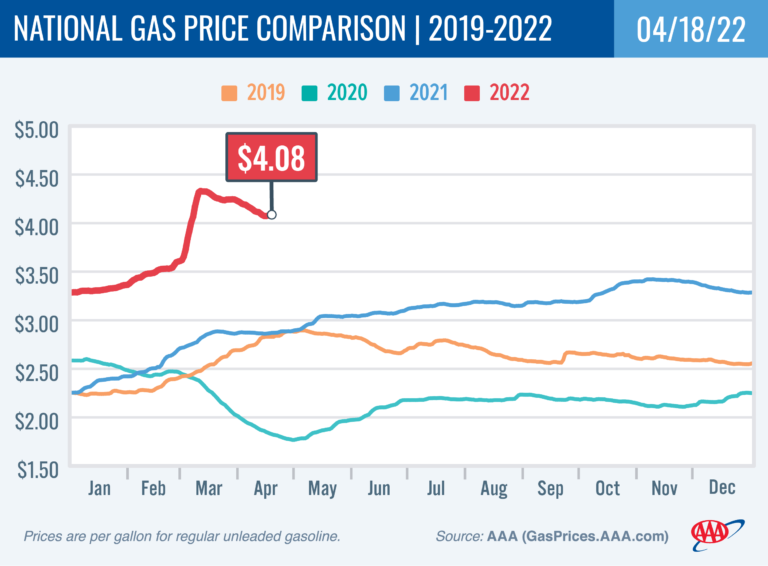PORTLAND, Ore. (KOIN) — Even as Oregonians continue to pay the fifth-highest gas prices in the US, most people have been able to breathe a bit easier as pump prices dropped in the state last month — but now experts are warning residents should not hold their breath.
As of this week, gas prices in Oregon and in many states have gone up again, following a continued decline from record highs reported in March.
As of April 19, AAA reported the average cost of a gallon of regular unleaded gas in Oregon had increased by roughly a penny from $4.66 to $4.68.
While paying a cent more will hardly impact local’s wallets, experts say the trend may continue as fuel demand rises and the Russian war in Ukraine rages on.
“The slide in gas prices has slowed as crude oil prices and U.S. demand for gasoline rise,” Marie Dodds, the public affairs director for AAA Oregon/Idaho, said. “The ongoing war in Ukraine and concerns of less Russian oil on the global market have sent crude prices back above $100 dollars per barrel, and that’s putting upward pressure on pump prices.”
According to AAA, Oregon is one of 25 states which now have higher gas prices than they did a week ago.
“For the week, the national average for regular holds steady at $4.10 a gallon,” AAA stated. “The Oregon average ticks up a penny to $4.68.”
The new report showed Maryland saw the largest increase this week, with the average price per gallon rising 31 cents. However, some states continued to see a drop in pump prices, like Ohio which had a decrease of seven cents on average.

“The national and Oregon averages are both a bit lower than their record highs set last month. The national average peaked at $4.331 on March 11 while the Oregon average peaked at $4.739 on March 11,” AAA said. “These prices eclipse the old record highs set in 2008 when the national average peaked at $4.11 on July 17, and the Oregon average peaked at $4.29 on July 3.”
Based on the figures in the most recent AAA report, demand for gasoline in the U.S. has jumped from 8.5 million barrels per day to 8.73 million barrels per day.
According to the U.S. Energy Information Administration, the number of gasoline stocks within the US dropped by 3.5 million barrels to 233.1 million barrels last week.
Given the increased demand, experts suggest as long as the state of Eastern Europe remains unpredictable, fuel costs in Oregon and across the US will continue to reflect that uncertainty.
“Demand for gasoline in the U.S. is edging up as pump prices dip below the record highs set in March,” AAA says. “Gasoline consumption typically increases this time of year as the days get longer and people drive more. But these lower pump prices could be temporary if the global price of oil increases due to constrained supply.”
